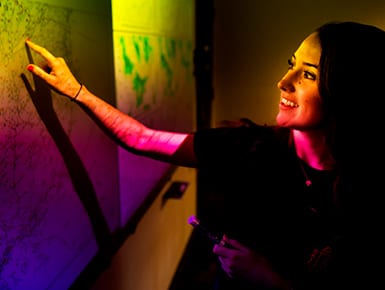Space Exploration, Commercialization, and Defense
Study solar winds, explore exoplanets, and transport robots and humans to new places in our solar system.
Are long-term orbital platforms or mining operations on the moon in our future? If private industry leads the way with new rocket development, who will benefit from new scientific findings and technological advances?
Explore all

ECE alum Mihir Sheth receives Young Innovator Award from Innovate UK for making a medical device that weans patients off ventilators quicker
Sheth is the co-founder of Inspiritus Health and has developed a simple to use, non-invasive medical device that keeps patients’ muscles engaged when they are on a ventilator to prevent muscle atrophy.
How Russia’s online censorship could jeopardize internet freedom worldwide
The nation is using inexpensive commodity equipment to block 170K domains on more than 1K privately-owned ISPs.
The post How Russia’s online censorship could jeopardize internet freedom worldwide appeared first on Michigan Engineering News.
Advancing AI for Video: Startup launches powerful video processing platform
Voxel51 uses AI processing to identify and track objects and activities through video clips.
The post Advancing AI for Video: Startup launches powerful video processing platform appeared first on Michigan Engineering News.
Online censorship detector aims to make the internet a freer place
Censored Planet could provide new insight into the flow of online information
The post Online censorship detector aims to make the internet a freer place appeared first on Michigan Engineering News.
A new company, Omniscent, is sniffing out dangerous levels of toxic chemicals in the air
Subscription service offers real-time monitoring
The post A new company, Omniscent, is sniffing out dangerous levels of toxic chemicals in the air appeared first on Michigan Engineering News.
Chat tool simplifies tricky online privacy policies
Register for an account on just about any website or download an app to your smartphone and you likely will encounter that pesky, “I certify that I’ve read and understand the privacy policy,” check box. “Typically drafted by lawyers, these documents tell you, ‘This the information we’re collecting, this is how we’re processing it, this […]
The post Chat tool simplifies tricky online privacy policies appeared first on Michigan Engineering News.
Apollo 15 at 50: A celebration of the all-Michigan crew’s mission and the future of space exploration
July 30 virtual event highlights future lunar and deep space missions, the technologies to get there, and U-M’s research contributions to space exploration.
The post Apollo 15 at 50: A celebration of the all-Michigan crew’s mission and the future of space exploration appeared first on Michigan Engineering News.
Apollo 15 — 50th anniversary
The all U-M crew was the U.S. Apollo program’s fourth lunar landing, and the first to use the Lunar Roving Vehicle.
The post Apollo 15 — 50th anniversary appeared first on Michigan Engineering News.
Answers Inc. – A brief history of U-M’s Space Physics Research Laboratory
For 75 years, SPRL has sent instruments skyward to help us better understand Earth, space, our sun and more.
The post Answers Inc. – A brief history of U-M’s Space Physics Research Laboratory appeared first on Michigan Engineering News.
In the news: Michigan Engineering experts May 24-28
Highlights include Bloomberg, New York Times and the Detroit News.
The post In the news: Michigan Engineering experts May 24-28 appeared first on Michigan Engineering News.
Testing advanced space engines here on Earth
U-M is a member of a new $15M institute to improve physics-based modeling of advanced thrusters for human space exploration.
The post Testing advanced space engines here on Earth appeared first on Michigan Engineering News.
Streamlining aircraft
Joaquim Martins pioneers high-fidelity simulations that bring together multiple disciplines. Recently incorporated into NASA’s open-source software, and being considered for adoption by aircraft manufacturers, the approach has the potential to change the game in aircraft design and other engineering systems.
The post Streamlining aircraft appeared first on Michigan Engineering News.
Universities’ crucial role in our spacefaring future
To ensure that our species endures, we must advance space-based technologies and break our interdisciplinary boundaries.
The post Universities’ crucial role in our spacefaring future appeared first on Michigan Engineering News.
Intercepting an asteroid
In prior posts, two Michigan Engineers worked on the ion engine aboard NASA’s DART probe, set to launch this winter.
The post Intercepting an asteroid appeared first on Michigan Engineering News.
Nuclear nonproliferation: $1.9M to improve detection of weapons-grade material
Untangling the signatures of smuggled nuclear materials from the radiation background created by shooting neutrons at suspected cargo is the task of U-M research team.
The post Nuclear nonproliferation: $1.9M to improve detection of weapons-grade material appeared first on Michigan Engineering News.
Most powerful laser in the U.S. to begin operations soon, supported by $18.5M from the NSF
With first light anticipated in 2022, the NSF will provide five years of operations funding, ramping up as the ZEUS user facility progresses to full capacity.
The post Most powerful laser in the U.S. to begin operations soon, supported by $18.5M from the NSF appeared first on Michigan Engineering News.
The Future of Lasers
Story by Colin Barras
The post The Future of Lasers appeared first on Michigan Engineering News.
Catching nuclear smugglers: fast algorithm could enable cost-effective detectors at borders
The algorithm can pick out weak signals from nuclear weapons materials, hidden in ordinary radiation sources like fertilizer.
The post Catching nuclear smugglers: fast algorithm could enable cost-effective detectors at borders appeared first on Michigan Engineering News.
Iran’s centrifuges and nuclear nonproliferation: A Q&A with Sara Pozzi
Understanding nuclear enrichment and what it means for the “Iran nuclear deal.”
The post Iran’s centrifuges and nuclear nonproliferation: A Q&A with Sara Pozzi appeared first on Michigan Engineering News.
Nuclear nonproliferation: $25 million for new tech and developing the security workforce
Many nuclear engineers who work in national security are headed for retirement. This initiative helps make sure we don’t drop the baton.
The post Nuclear nonproliferation: $25 million for new tech and developing the security workforce appeared first on Michigan Engineering News.
Nuclear nonproliferation: U-M participates in project monitoring nuclear reactors from afar
Secret nuclear power reactors could be detected by capturing elusive antineutrinos.
The post Nuclear nonproliferation: U-M participates in project monitoring nuclear reactors from afar appeared first on Michigan Engineering News.
Sara Pozzi featured in nuclear nonproliferation podcast
Listen to Sara Pozzi and colleagues at Oregon State discuss nuclear nonproliferation today and technologies on the horizon.
The post Sara Pozzi featured in nuclear nonproliferation podcast appeared first on Michigan Engineering News.
Renovated nuclear reactor building opens as world-class labs
Inside the new Nuclear Engineering Labs, researchers in the nation’s top-ranked nuclear engineering program will focus on advancing nuclear security, nonproliferation, safety and energy.
The post Renovated nuclear reactor building opens as world-class labs appeared first on Michigan Engineering News.
Tracking ocean microplastics from space
Satellites give new insights on the Great Pacific Garbage Patch, plus sources and flows of ocean microplastic.
The post Tracking ocean microplastics from space appeared first on Michigan Engineering News.
In the news: Michigan Engineering experts August 9-13
Highlights include the Los Angeles Times.
The post In the news: Michigan Engineering experts August 9-13 appeared first on Michigan Engineering News.
In the news: Michigan Engineering experts June 21-25
Highlights include Vox and the New York Times.
The post In the news: Michigan Engineering experts June 21-25 appeared first on Michigan Engineering News.
Studying Earth’s defenses against solar storms
NASA undertakes a comprehensive look at a critical atmospheric buffer between us and the sun, powered in part by University of Michigan researchers and alumni.
The post Studying Earth’s defenses against solar storms appeared first on Michigan Engineering News.
The box that rocked the universe
Meet the U-M researcher who helped pioneer the CubeSat—and a new era in space exploration.
The post The box that rocked the universe appeared first on Michigan Engineering News.
Parker Solar Probe data bolsters theories in long-running solar riddle
University of Michigan researchers were able to accurately predict when and where the probe would cross an important barrier in the sun’s atmosphere.
The post Parker Solar Probe data bolsters theories in long-running solar riddle appeared first on Michigan Engineering News.
The ocean is full of tiny plastic particles – we found a way to track them with satellites
In The Conversation, Chris Ruf explains how CYGNSS can find the source ocean microplastics and aid in future clean up.
The post The ocean is full of tiny plastic particles – we found a way to track them with satellites appeared first on Michigan Engineering News.
In the news: Michigan Engineering experts June 14-18
Highlights include Popular Science, CNet and Science Alert
The post In the news: Michigan Engineering experts June 14-18 appeared first on Michigan Engineering News.
Pioneering a way to keep very small satellites in orbit
More than 250 students had a hand in a satellite scheduled to launch on January 17th, the first in space for a project to keep nanosats in orbit by harnessing Earth’s magnetic field.
The post Pioneering a way to keep very small satellites in orbit appeared first on Michigan Engineering News.
Hurricane-tracking CYGNSS satellite system gets NASA renewal as it expands its reach
Ocean wind tracker is finding new uses for inland studies.
The post Hurricane-tracking CYGNSS satellite system gets NASA renewal as it expands its reach appeared first on Michigan Engineering News.
More than $5M to improve solar storm forecasts
U-Michigan researchers play lead roles in national effort funded by NSF, NASA.
The post More than $5M to improve solar storm forecasts appeared first on Michigan Engineering News.

A shoe-box-sized chemical detector
Powered by a broadband infrared laser, the device can zero in on the ‘spectral fingerprint region’.
Autonomous vehicles can be fooled to ‘see’ nonexistent obstacles
Vehicles that perceive obstacles that aren’t really there could cause traffic accidents.
The post Autonomous vehicles can be fooled to ‘see’ nonexistent obstacles appeared first on Michigan Engineering News.
Computer vision: Finding the best teaching frame in a video for fake video fightback
The frame in which a human marks out the boundaries of an object makes a huge difference in how well AI software can identify that object through the rest of the video.
The post Computer vision: Finding the best teaching frame in a video for fake video fightback appeared first on Michigan Engineering News.
Battery-free sensor startup takes aim at industrial efficiency
Part of the team that brought us the world’s smallest computer in 2015 brings the future of computing technology into the present.
The post Battery-free sensor startup takes aim at industrial efficiency appeared first on Michigan Engineering News.
Honoring the past and sizing up nuclear’s future at the Phoenix rededication
The Michigan Memorial Phoenix Project, conceived as a war memorial following World War II, remains relevant in the face of climate change and international conflict.
The post Honoring the past and sizing up nuclear’s future at the Phoenix rededication appeared first on Michigan Engineering News.
Her fight for your rights
Could censorship end the internet as we know it? Not if Roya Ensafi can help it.
The post Her fight for your rights appeared first on Michigan Engineering News.
Less nosy smart speakers
Technology could capture household information without recording speech.
The post Less nosy smart speakers appeared first on Michigan Engineering News.
Election lessons from Michigan
Election security expert J. Alex Halderman dissects Antrim County’s election debacle to help future contests go more smoothly.
The post Election lessons from Michigan appeared first on Michigan Engineering News.
$1.8M DARPA project aims to protect cars, trucks and spacecraft from hackers
Ironpatch could head off growing danger of security vulnerabilities in vehicle systems.
The post $1.8M DARPA project aims to protect cars, trucks and spacecraft from hackers appeared first on Michigan Engineering News.
How Let’s Encrypt doubled the percentage of secure websites in four years
A Q&A with J. Alex Halderman, who co-founded the nonprofit organization.
The post How Let’s Encrypt doubled the percentage of secure websites in four years appeared first on Michigan Engineering News.
5 ways Americans can keep their vote secure and accurate
Expert advice for voting in an unprecedented election.
The post 5 ways Americans can keep their vote secure and accurate appeared first on Michigan Engineering News.
New remote voting risks and solutions identified
The upcoming presidential election in the middle of a pandemic has many jurisdictions exploring new technologies. They’re not secure.
The post New remote voting risks and solutions identified appeared first on Michigan Engineering News.
Not enough voters detecting ballot errors and potential hacks, study finds
Researchers carried out the first study on voter behavior with electronic assistive devices, found 93% missed incorrect ballots.
The post Not enough voters detecting ballot errors and potential hacks, study finds appeared first on Michigan Engineering News.
Intel processor vulnerability could put millions of PCs at risk
Patches can provide protection.
The post Intel processor vulnerability could put millions of PCs at risk appeared first on Michigan Engineering News.
Zuckerberg Capitol Hill testimony: Engineering experts offer comments
U-M profs weigh new business model, European-style regulation
The post Zuckerberg Capitol Hill testimony: Engineering experts offer comments appeared first on Michigan Engineering News.
‘I hacked an election. So can the Russians.’
Professor Alex Halderman and the New York Times staged a mock election to demonstrate voting machine vulnerability.
The post ‘I hacked an election. So can the Russians.’ appeared first on Michigan Engineering News.
CSE PhD student Matt Bernhard on the Facebook data breach
In this video, CSE PhD Student Matt Bernhard weighs in on the matter Facebook data harvesting, such as that done by Cambridge Analytica.
The post CSE PhD student Matt Bernhard on the Facebook data breach appeared first on Michigan Engineering News.
Cuba ‘sonic attacks’: A covert accident?
‘We’ve demonstrated a scenario in which the harm might have been unintentional.’
The post Cuba ‘sonic attacks’: A covert accident? appeared first on Michigan Engineering News.
Internet-scanning U-M startup offers new approach to cybersecurity
Censys is the first commercially available internet-wide scanning tool. It helps IT experts to secure large networks with a constantly changing array of devices.
The post Internet-scanning U-M startup offers new approach to cybersecurity appeared first on Michigan Engineering News.
Katie Bouman talks legacy of the black hole imaging project and favorite U-M memories
Before Bouman became the face of the project that brought us the first ever image of a black hole, she was wowing ECE professors with design projects and hoarding Domino’s pizza with her HKN family.
The post Katie Bouman talks legacy of the black hole imaging project and favorite U-M memories appeared first on Michigan Engineering News.

Leung Tsang elected to the National Academy of Engineering
A professor of electrical engineering and computer science is awarded one of engineering’s top honors.

Prof. Kamal Sarabandi welcomes Emperor and Empress of Japan at IGARSS 2019
Predicting future disasters is an important goal of those participating in the IEEE Geoscience and Remote Sensing Symposium

Prof. Louise Willingale creates extreme plasma conditions using high-intensity laser pulses
Willingale’s research in plasma physics advances many research areas from spectacular astrophysical phenomena to cancer treatment to fusion power.

The Wolverines Behind the Next Generation of Autonomous Vehicles
The Center for Entrepreneurship profiles a team of EECS students, who are working to develop the next generation of delivery vehicles.

Necmiye Ozay receives NASA Early Career Faculty Award for research in cyber-physical systems
Prof. Ozay’s award-winning work will be used in future space missions

First light soon at the most powerful laser in the US
The ZEUS laser at the University of Michigan has begun its commissioning experiments

ZEUS Joins International Community of Extreme Light Virtuosos
As a member of the X-lites program, ZEUS joins an international community of extreme light labs working together to advance laser science for the benefit of society
Michigan startup MemryX, Inc. promises faster, cheaper AI processing
The ECE startup builds neuromorphic computer chips uniquely suitable for AI applications
The post Michigan startup MemryX, Inc. promises faster, cheaper AI processing appeared first on Michigan Engineering News.

Mingyan Liu, 2018 Distinguished University Innovator, talks about her company and data science commercialization
Mingyan Liu, recipient of the 2018 Distinguished Innovator of the Year award, gave a talk about her startup company and participated on a panel discussing data science commercialiation.

Embracing Risk: Cyber insurance as an incentive mechanism for cybersecurity
This new book by Mingyan Liu offers an engineering and strategic approach to improving cybersecurity through cyber insurance

First IFIP Workshop on Intelligent Vehicle Dependability and Security
The workshop, co-organized by a team including two EECS faculty, focused on ensuring the safety of Level 3 autonomous vehicles, where humans must be ready to take over control.

Xueru Zhang awarded Rackham Predoctoral Fellowship
Zhang is working to improve data security and address important ethical issues related to AI and discriminatory data sets.

Time-varying metamaterials for next generation communication, sensing, and defense systems
With $7.5M MURI grant, Professor Anthony Grbic is developing metamaterials for a new generation of integrated electromagnetic and photonic systems.

Behzad Yektakhah earns paper award for research in seeing through walls
Yektakhah’s system improves on the speed, portability, and accuracy of many commercial models

Two Michigan papers win top awards at IEEE Security and Privacy Symposium
One of the paper describes and demonstrates a malicious hardware backdoor. The other demonstrated security failings in a commercial smart home platform.

Thomas Chen earns NSF Graduate Research Fellowship for research in artificial neural networks for computer vision
Thomas and his group are working to improve upon artificial neural network design through a process called sparse coding.

Yi-Chin Wu receives ProQuest Distinguished Dissertation Award for research in network security
Her dissertation focused on “opacity,” which captures whether a given secret of the system can be inferred by intruders who observe the behavior of the system.

Yelin Kim wins Best Student Paper Award at ACM Multimedia 2014 for research in facial emotion recognition
She computationally measures, represents, and analyzes human behavior data to illuminate fundamental human behavior and emotion perception, and develop natural human-machine interfaces.

Prof. Kamal Sarabandi elected President of IEEE Geoscience and Remote Sensing Society
The IEEE Geoscience and Remote Sensing Society is a remote sensing organization with more than 3700 members around the globe.

Prof. Becky Peterson awarded DARPA Young Faculty Award to investigate new materials for power semiconductor devices
Peterson’s findings could be used in wireless sensing and actuation systems, including those that deal with monitoring of the environment and medical conditions.

Prof. Pallab Bhattacharya to receive 2015 IEEE David Sarnoff Award
Since coming to the University in 1984, Bhattacharya has pioneered several important technological advances.

Shrinking the size of optical systems, exponentially
The researchers believe that metasurfaces could one day be used to completely control the phase, amplitude, and polarization of light.

When GPS fails, this speck of an electronic device could step in
The research group developed special fabrication processes that allows them to stack and bond seven different devices in layers.

New laser shows what substances are made of; could be new eyes for military
By shining the laser on a target and analyzing the reflected light, researchers can tell the chemical composition of the target.

After Newtown: A new use for a weapons-detecting radar?
The technology could potentially identify a hidden weapon from a distance in less than a second.

James McCullagh receives Best Student Paper Award for research to keep bridges safe
McCullagh is working to develop energy harvesting devices and circuits to power wireless sensor nodes which can monitor bridge health.

‘Perfect black’ coating can render a 3D object flat, raises intriguing dark veil possibility in astronomy
The carbon nanotube carpet is about half the thickness of a sheet of paper and absorbs 99.9 percent of the light that hits it.

MRover crowned champions of the University Rover Challenge
From autonomously navigating rocky terrain to testing soil for signs of life, the Michigan Mars Rover team bested their competition and took first place at the international competition.

Anthony England, former NASA astronaut, professor, and dean, retires
England has dedicated more than two decades of his distinguished career helping students reach for the stars to understand more about Earth and other planets.

A MiTEE student and her quest to shape the future of space satellites
Maya Pandya, an Electrical Engineering senior, is a key member of the student team working to design a new generation of CubeSats that may revolutionize how we monitor space environments and provide a new method for interplanetary communication.

Student works on a NASA quantum satellite link
ECE master’s student Conner Stevons completed a remote internship at the NASA Glenn Research Center where he worked on Marconi 2.0, NASA’s plan to bridge quantum technology with a telecommunications system.

Building CubeSats to test electrodynamic tethering in space with MiTEE
Mi-TEE (Miniature Tether Electrodynamics Experiment) is a University of Engineering project directed by Prof. Brian Gilchrist that aims to test the tethering technology in space.

Katie Bouman wows U-M community with insider’s look at the black hole imaging project
Speaking to a full house in Rackham, Dr. Katie Bouman – Michigan ECE alum – explained the history and science of the project that gave us the first ever photo of a black hole.

U-M to become Mount Olympus with ZEUS, the most powerful laser to be built in the U.S.
The three-petawatt system could unlock secrets of the universe, advance cancer treatments, improve security screenings for nuclear threats, and much more.

Beyond Apollo 11: U-M ECE’s role in advancing space exploration
For the 50th anniversary of the Apollo 11 moon landing, U-M ECE takes a look back – and a look forward – to how our professors, students, and alums have made their mark on the field.

Michigan Mars Rover Team has best ever finish at the annual University Rover Challenge
MRover placed 7th overall at the annual challenge where rovers use AI to navigate tough terrain while collecting soil samples to practice testing for evidence of life in the universe.

Undergrad Michelle Gehner engineers better ways to explore new worlds
Gehner’s academic career includes advancing power electronics and crafting new extraterrestrial vehicles for MRover. She received the IEEE Power and Energy Society Scholarship for her promising future in power and energy.

2018 Nobel Prize Laureate Gérard Mourou talks high-intensity optics
Gérard Mourou, Professor Emeritus of EECS, returned to campus to discuss winning the Nobel Prize and his work in high-intensity optics.
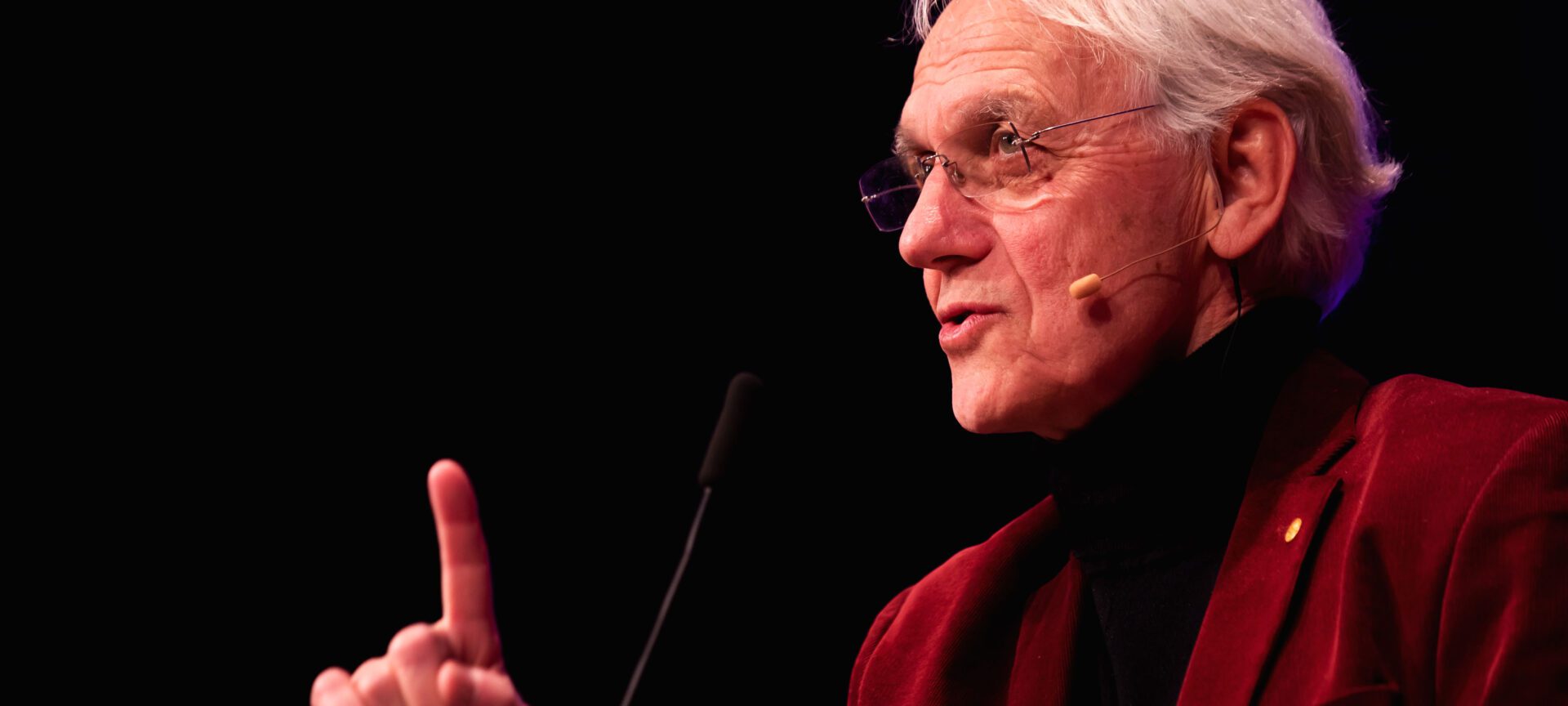
Extreme light: Nobel laureate discusses the past & future of lasers
Lasers of tomorrow might neutralize nuclear waste, clean up space junk and advance proton therapy to treat cancer, says Gerard Mourou.

ECE student Brandon Russell explores space phenomena in a lab
PhD student Brandon Russell is awarded the Rackham International Student Fellowship for his research on magnetic fields in high-energy plasmas, which could help advance the development of clean energy and our understanding of energetic astrophysical phenomena.

Miniature satellites to maximize global communication
Havel Liu is working on a project to revolutionize satellite systems, improving communications during natural disasters and providing a blueprint for receiving future interplanetary voicemails

Deciphering GPS satellites to see inside hurricanes
To dial in on exact wind speeds, researchers needed to reverse engineering the signals from satellites.

Mars Rover Team tackles major redesign, places in top 10 at competition
This year’s model, “Phoebe,” received a major design overhaul that gave her a speed boost and new codebase that can be used for years to come.

Huanting Huang and the mathematical shape of trees
An award-winning modeling method will help us better understand our natural environment
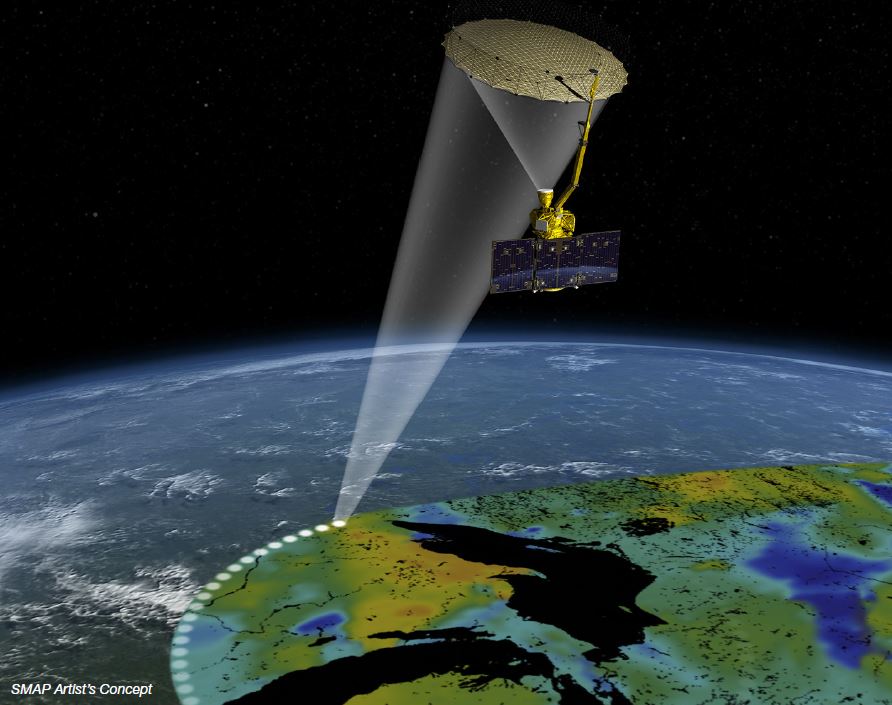
SMAP Update: A mission to manage water globally
The satellite mission to collect global data of surface soil moisture can help weather forecasting around the world.

Louise Willingale advancing scientific knowledge of plasmas
Using some of the best lasers in the world, Willingale is shedding light on the impact of solar events on Earth.
Professor Leung Tsang Receives 2018 Van de Hulst Award
Prof. Tsang is a world-renowned expert in the field of theoretical and computational electromagnetics, and in particular microwave remote sensing of the earth.

Historic satellite launch brings U-M history to space
Planning to launch mid-2018, an exciting team of Michigan students is designing a space-based time capsule.
Student hybrid rocket team takes first place at inaugural competition
The Michigan Aeronautical Science Association (MASA) won the first ever Spaceport America Cup, an intercollegiate rocket engineering competition with over 110 teams from colleges and universities in eleven countries.

Student Arun Nagpal develops new ENG 100 section to spotlight space science
UM-SEDS co-President Arun Nagpal develops ENG 100 section to expose freshman to space science and atmospheric sensing.

Steven Battel elected to National Academy of Engineering
Mr. Battel is an expert on low-noise instrumentation power systems and is internationally recognized for his expertise in the design and development of space high voltage systems.

Iverson Bell – Researching the future of space satellites
Mr. Bell is investigating the potential of electrodynamic tether propulsion technology to enhance the capabilities of an emerging class of smartphone-sized satellites.

‘Space tethers’ can be used to fling spacecraft into interplanetary space
The tether could be used to deorbit out-of-use spacecraft, push spacecraft from low Earth orbit into higher orbits, or even push spacecraft out of Earth’s orbit altogether.

Researchers build groundbreaking device for NASA SMAP mission
The SMAP mission is NASA’s most ambitious sensing project yet for measuring global soil moisture levels.

Iverson Bell’s small satellite wins big
Iverson developed an experimental facility to simulate key characteristics of the space environment.

Peter Tchoryk: An entrepreneurial CEO
At MAC, Peter’s been able to combine his passions for scientific research and entrepreneurial creation.

Using HERCULES to probe the interior of dense plasmas
Thanks to HERCULES, scientists are now able to study very dense plasmas — a crucial step in nuclear fusion and astrophysical research.

Chris Berry awarded 2012 Michigan Space Grant Consortium Fellowship
The proposed emitter incorporates plasmonic photoconductors to more efficiently convert power from incident laser light into terahertz radiation.

Chris Berry awarded Michigan Space Grant Consortium Fellowship
Berry is designing an emitter to operate as a light-weight, local oscillator for a terahertz spectroscopy system suitable for use in space.

Ruzbeh Akbar receives NASA Fellowship for SMAP Mission Research
SMAP is a satellite mission for mapping surface soil moisture and freeze/thaw states for the purpose of scientific advances and societal benefits.

Michael Benson receives NASA Fellowship
For his research, Benson plans to utilize SAR in order to estimate variable vegetated parameters and monitor the planet’s crustal movement.

The next medical markets of Collin Rich
An expert health sciences entrepreneur, Rich is ready to repeat success with revolutionary technology.

Alum startup wins $25,000 at Accelerate Michigan Competition
Movellus Circuits won $25,000 in the University Research Highlight and People’s Choice categories

Googling the physical world
IoT applications are the next wave of computing and the next driving force of the semiconductor industry. The startup PsiKick [now Everactive] is helping shape this future.

3 ECE companies make the Silicon 60 List – again!
Ambiq Micro, Crossbar, Inc., and PsiKick, are leading the way in ultra-low power chip design, pioneering computer memory, and ultra-low power wireless sensor platforms.
Silicon valley entrepreneurs help bring WIMS2 technology to the world
Shahin and Sassan discussed everything from the acquisition trends of small vs. large companies to the importance of building a team with a range of expertise.

Rick Bergman, CEO of Synaptics – giving tech a sense of touch
ECE alum Rick Bergman, CEO of Synaptics, is working to make tomorrow’s technology user friendly, safe, and reliable. The company hopes to lead what they call “the human interface revolution.”

Two ‘U’ researchers receive Distinguished University Innovator Award
The Michigan Daily profiles Professors David Blaauw and Dennis Sylvester, who are this year’s recipients of the 2019 Distinguished University Innovator Award.

U-M cyber security startup purchased by FICO
Analytic software company FICO of San Jose, Calif., bought QuadMetrics to help in its development of a FICO Enterprise Security Score.

Fighting cyber crime with data analytics
QuadMetrics offers a pair of services to help companies both assess the effectiveness of their security and decide the best way to allocate (or increase) their security budget.

With Slide, student entrepreneurs aim to make contact sharing frictionless
Built by students and funded by student VCs, the venture marks a new model for launching ideas into ventures.

Amulya Parmar: One conversation can change everything
Amulya Parmar started his first company at 15, and is committed to positive impact in all of his endeavors.

U-M startup SkyGig aims to take 5G to the next level
With new funding in the company, the hardtech startup is bringing revolutionary technologies to reshape mmWave wireless.

U-M startup NS Nanotech unveils new generation of LEDs for high-efficiency, high-performance displays
Brighter, crisper screens that draw half the power and lasts twice as long are possible with NS Nanotech’s next-gen LEDs.

Five EECS faculty and alumni recognized for business success
Nominees were selected based on their career accomplishments, impact in their field, and contributions to their community.

Blaauw, Sylvester are 2019 Distinguished University Innovators
Pioneering computer technology that is spurring innovation and disruption across industries has earned David Blaauw and Dennis Sylvester, professors of electrical engineering and computer science, this year’s Distinguished University Innovator Award.

KLA opens new R&D office in Ann Arbor
The global capital equipment company is looking to harness the engineering talent at U-M and power a brighter future with tech.

A Spotlight on Optics
The Optics Society at U-M hosted an Industry Spotlight event, which brought academia, industry, and community together to celebrate all things optics and photonics.

U-M startup raises $6 million in venture funding
Movellus is a U-M startup founded by alumni Dr. Mo Faisal (now CEO) and Dr. Jeff Fredenburg (now VP of Engineering).

Rick Bolander: Entrepreneurship is a team sport
Rick Bolander (BSE MSE EE ’83 ’85; MBA ’94, Harvard) has devoted his career to fulfilling the entrepreneurial dreams of others as much as his own.

Transformative approach to 5G funded by new Innovator program
Nine technologies competed for $75k in the ECE Innovator Program, which emphasizes a team approach to entrepreneurial success.

Q&A with Mingyan Liu
The incoming electrical and computer engineering chair talks about her vision for the future.

Evigia founder Navid Yazdi creates essential sensor networks
Alumnus Navid Yazdi develops sensors that accomplish incredible tasks.

Fred Buhler builds better chips for “Aweslome” applications
Fred Buhler founded Aweslome to provide custom-build chips for a broad range of applications, including machine learning, neural networks, security, and circuits testing.
A VR-powered crystal structures app (video)
MHacks winner Duncan Abbot wants his VR software startup, Gwdion, to change how humans interact with technology.

The ‘Power’ of a lunchbox
Vasanthakumar came back to Chennai in 2016 with a goal to reinvent traditional and widely used personal products, starting with one of the most versatile products –— the lunchbox.
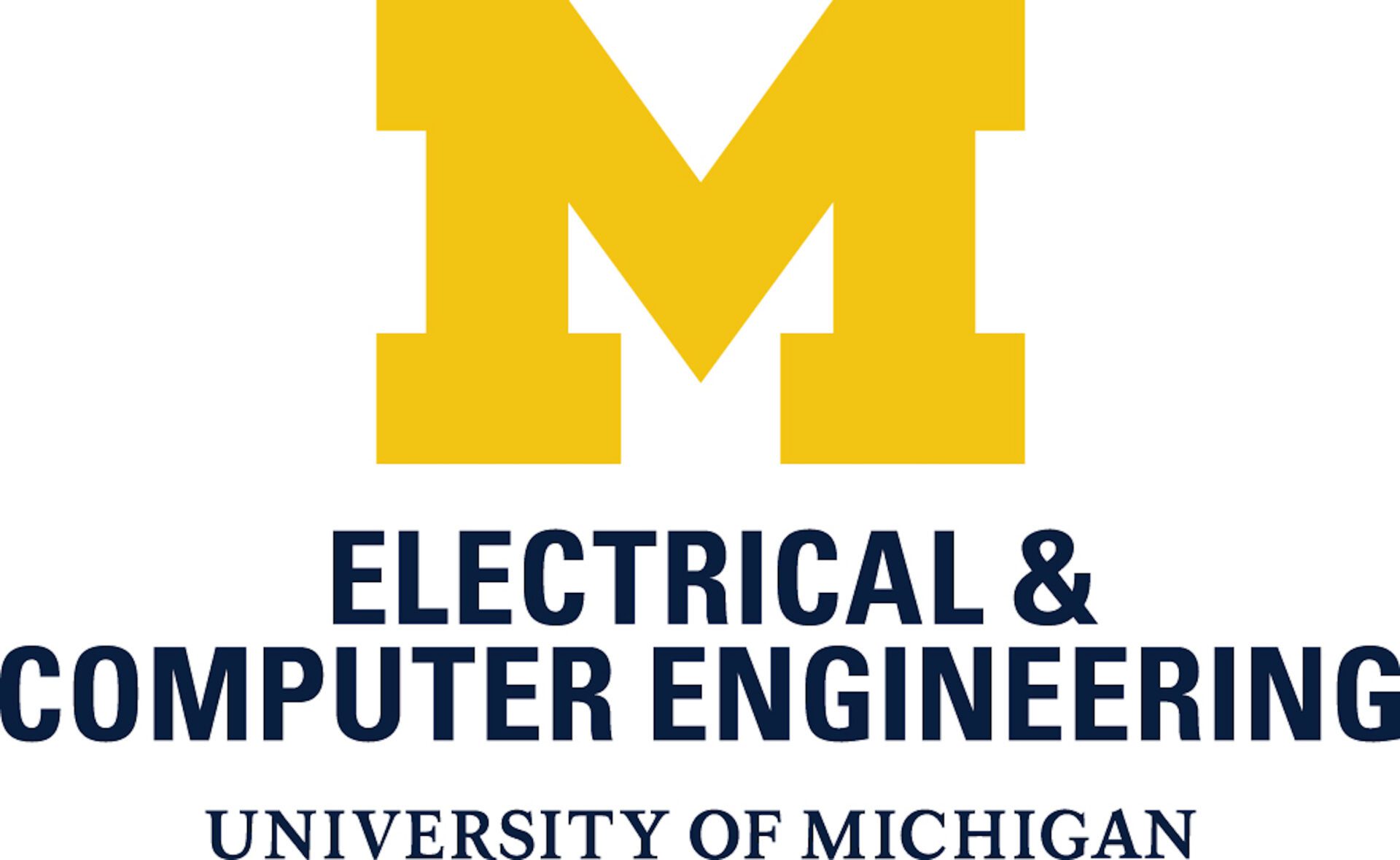
ECE Alumnus Kevin Johnson receives IEEE-USA Award
This award is given to those for Distinguished Public Service that is expected to help tech employees

CubeWorks: Solving problems with the world’s smallest and lowest-power computers
Cubeworks receives its first external funding to manufacture millimeter-scale computing devices

MHacks win propels virtual reality startup named Gwydion, focused on child therapy and 3D gaming
EE senior Duncan Abbot and his new startup Gwydion want to make VR worth the while. Their early projects range from therapy in children’s hospitals to helping materials scientists study 3D crystals.

Making Memory Smaller, Better, Faster, Stronger
Prof. Wei Lu and former student Dr. Sung Hyun Jo co-founded Crossbar, Inc. to tackle the physical limitations of conventional memory technology.
G is for Google
Larry Page changed the web forever in 1998, now he wants to change the world.

Engineering a better life for people with diabetes
Hygieia automates and streamlines diabetes treatment, a disease affecting over 29 million Americans.

Cutting the cost of hearing
MEMStim’s technology is already two phases into pre-clinical testing in preparation for FDA examination. Very few MEMS devices have made it this far.

First-ever ECE Career Fair builds student careers and alumni connections
Local companies set up stands in the EECS Atrium to recruit from over 200 graduate and undergraduate students.

Ashraf Dahod: 2015 CoE Alumni Medal Award Winner
Dahod has combined an understanding of technology with a knack for recognizing market opportunities and built a string of successful technology companies.
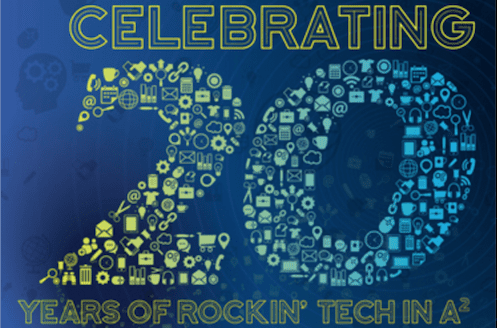
Jimmy Hsiao – A local player in a global market
Jimmy founded Logic Solutions, Inc., a consulting company offering website development, web and mobile applications, and other tech solutions to companies around the world.
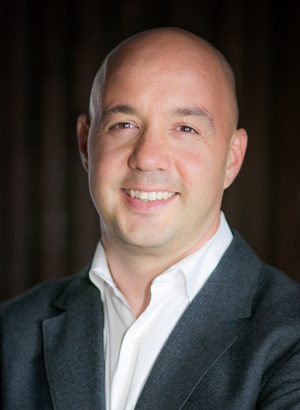
Claude Gauthier and OmniPhy: Connecting to the ethernet revolution
Dr. Gauthier is co-founder and CTO of the semiconductor interface intellectual property (IP) company, OmniPhy.

Engineering friendship
Alum startup Jetivity aims to bring people together around shared interests with a free platform for posting activities.

EECS students make career connections at NSBE conference
55 U-M engineers attended the convention, themed “Reimagining Your Future,” and developed vital connections in their field.

Four EECS companies make Crain’s list of most innovative companies, and one tops the list
This annual ranking of innovative companies in SE Michigan is based on the quality of patents received during the past year.
ECE alumna Ruba Borno to join Cisco’s new executive team
The young executive has an extensive history in both the business and tech worlds.

The Mad Scientist’s Lab: A look inside Mitch Rohde and Quantum Signal’s school-sized playhouse
Don’t let the retro arcade games and oscilloscopes fool you – Mitch’s company is as modern as they come.

Stephen Forrest receives 2015 Distinguished University Innovator Award
Prof. Forrest is widely acknowledged as one of the most successful academic inventors and entrepreneurs today.

Year of growth, experiments for May Mobility
May Mobility intends to gradually acclimate the public to the experience of autonomous driving.
Virta Labs Introduces PowerGuard™
Virta Laboratories was co-founded in part by Prof. Kevin Fu and former CSE postdoctoral researcher Denis Foo Kune.

Rackham Predoctoral Fellowship for design of robust, reliable and repairable software systems
Subarno Banerjee uses program analysis to improve software systems’ safety and security.

Bringing smart banking to market
Jason Mars, CEO of Ann Arbor startup Clinc, was named #2 in Bank Innovations’s “10 Most innovative CEOs in Banking 2017” list. Clinc is leading the pack for development of intelligent banking assistant software.

Z. Morley Mao elected IEEE fellow for contributions to performance and security of internet routing and mobile systems
Prof. Mao and her students have played an important role in understanding the efficiency, security, and performance of a number of mobile systems.
Secure your website now: Let’s Encrypt enters Public Beta
Let’s Encrypt allows anyone to request a free website security certificate without needing an invitation.

U-M spin-off Agita Labs releases always encrypted computing product
TrustForge, based on U-M research spearheaded by Austin and Bertacco, provides users with the ability to protect data using a process called sequestered encryption

Five ways to keep vaccine cold storage equipment safe from hackers
A medical security expert outlines the risks and how hospitals can protect themselves.

Hacking reality
Microphones that “hear” light; microprocessors that “tell” us secrets; self-driving cars that “see” fake objects; sensors that “feel” the wrong temperature. Our devices are under attack in new, increasingly sophisticated ways. Security researchers at CSE are exploring the limits of hardware and finding new, sobering vulnerabilities in our computers and homes.

After five years, Let’s Encrypt, a non-profit based on tech developed at Michigan, has helped to secure the internet
Today, over 225 million websites are protected by free certificates issued by Let’s Encrypt.

Major side-channel discovery wins NSA contest
The winning paper broke open a new area of investigation in hardware-based data leaks.

Censored Planet: Tracking internet censorship without on-the-ground participation
Censored Planet is releasing technical details for other researchers and for activists.

CSE researchers help organize 10th anniversary workshop on internet freedom
Prof. Roya Ensafi and PhD candidate Reethika Ramesh led organizing efforts for USENIX’s Tenth Workshop on Free and Open Communications on the Internet.

New collaboration promises greater innovation in medical device security
The two organizations will connect their membership and partner networks to work on advancing security for life-saving devices.

IEEE security conference features six accepted papers from CSE researchers
The projects impact voting systems, physical sensors, integrated circuit fabrication, and multiple microarchitectural side-channel vulnerabilities.

Todd Austin Named S. Jack Hu Collegiate Professor of Computer Science and Engineering
Prof. Austin is a creative, outside-the-box thinker who has produced a body of work that has had extraordinary impact in the area of computer architecture.
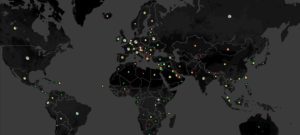
Real-time monitor tracks the growing use of network filters for censorship
The team says their framework can scalably and semi-automatically monitor the use of filtering technologies for censorship at global scale.

Researchers design new solution to widespread side-channel attacks
The proposal provides a chip-level safeguard against sensitive data being transmitted after it’s accessed.

Researchers take control of Siri, Alexa, and Google Home with lasers
The newly discovered microphone vulnerability allows attackers to remotely inject inaudible and invisible commands into voice assistants using light.

Offensive vehicle security toolbox makes car hacking easier
The new system is designed to save security researchers time and effort spent reverse-engineering the message format of every vehicle they study.

New tool combats evolving internet censorship methods
Technology pioneered by Michigan researchers can circumvent many effective website blocking tools

Year of vulnerability hunting uncovers potential attacks on Intel Chips, RAM
All three of these attacks put users’ privacy at risk, exploiting new routes to sensitive data.
Remote attack on temperature sensors threatens safety in incubators and industry
The researchers demonstrated that an adversary could remotely manipulate the temperature sensor measurements without tampering with the targeted system or triggering automatic temperature alarms.

PET Award for making privacy policies easier to read
The research generated a chatbot to help users sift through important details in privacy policies.

Best paper award for analysis of a decade of malware reports
The research suggests that common blacklist-based prevention systems are ineffective.

Michigan’s new Election Security Commission holds inaugural meeting on U-M Campus
The meeting began the commission’s review and assessment of election security in Michigan.
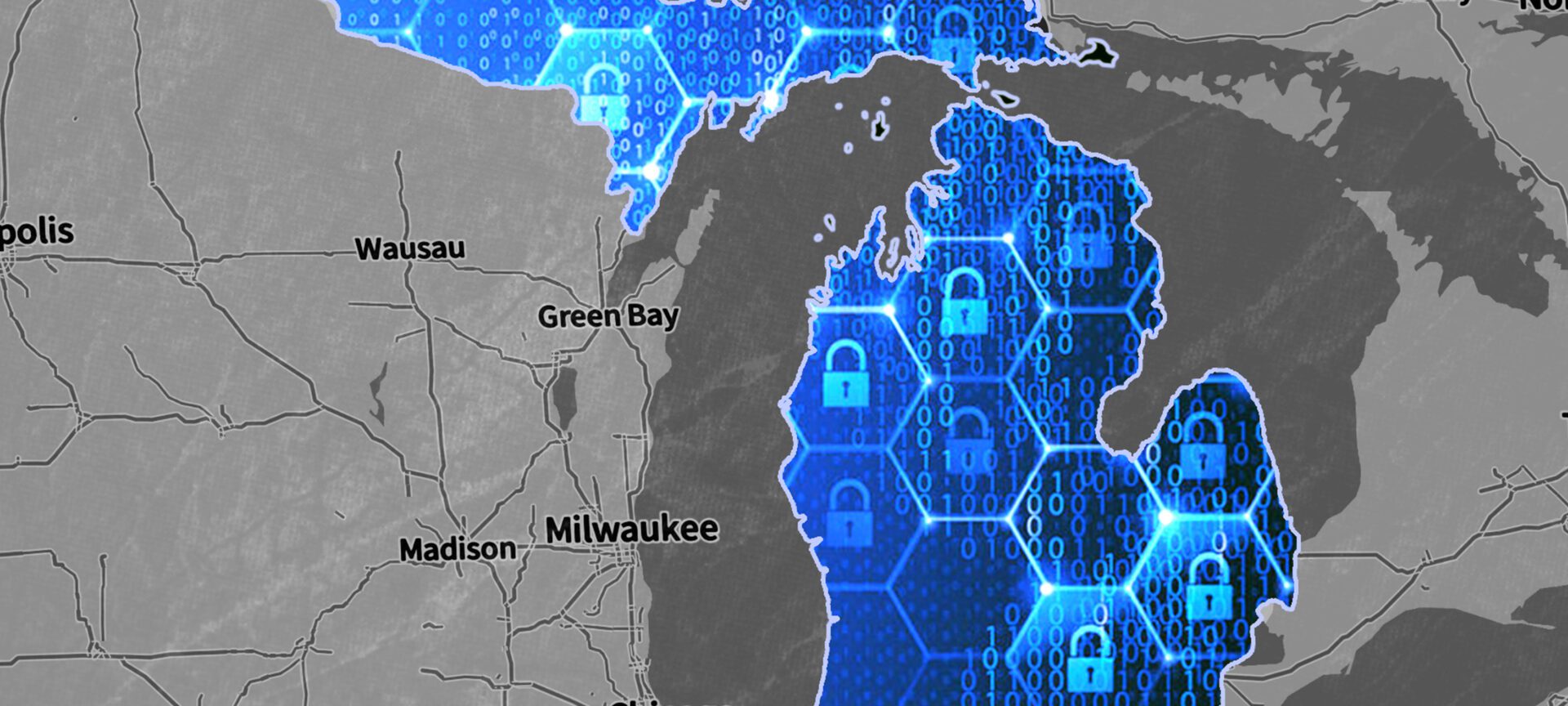
Halderman co-chairs new commission to protect Michigan votes
The effort seeks to protect the integrity of every vote.

Election security: Halderman recommends actions to ensure integrity of US systems
In congressional testimony, professor urges $370M in federal funding to replace outdated machines.

Facebook Fellowship for research on web privacy, security, and censorship
McDonald works to develop better privacy and security tools for marginalized communities

Study reveals new data on region-specific website blocking practices
A team of researchers unearthed new data on geographic denial of access to web content in a new paper.

A secure future for US elections starts in the classroom
A new special topics course on election cybersecurity gives students an examination of the past, present, and future of US elections.
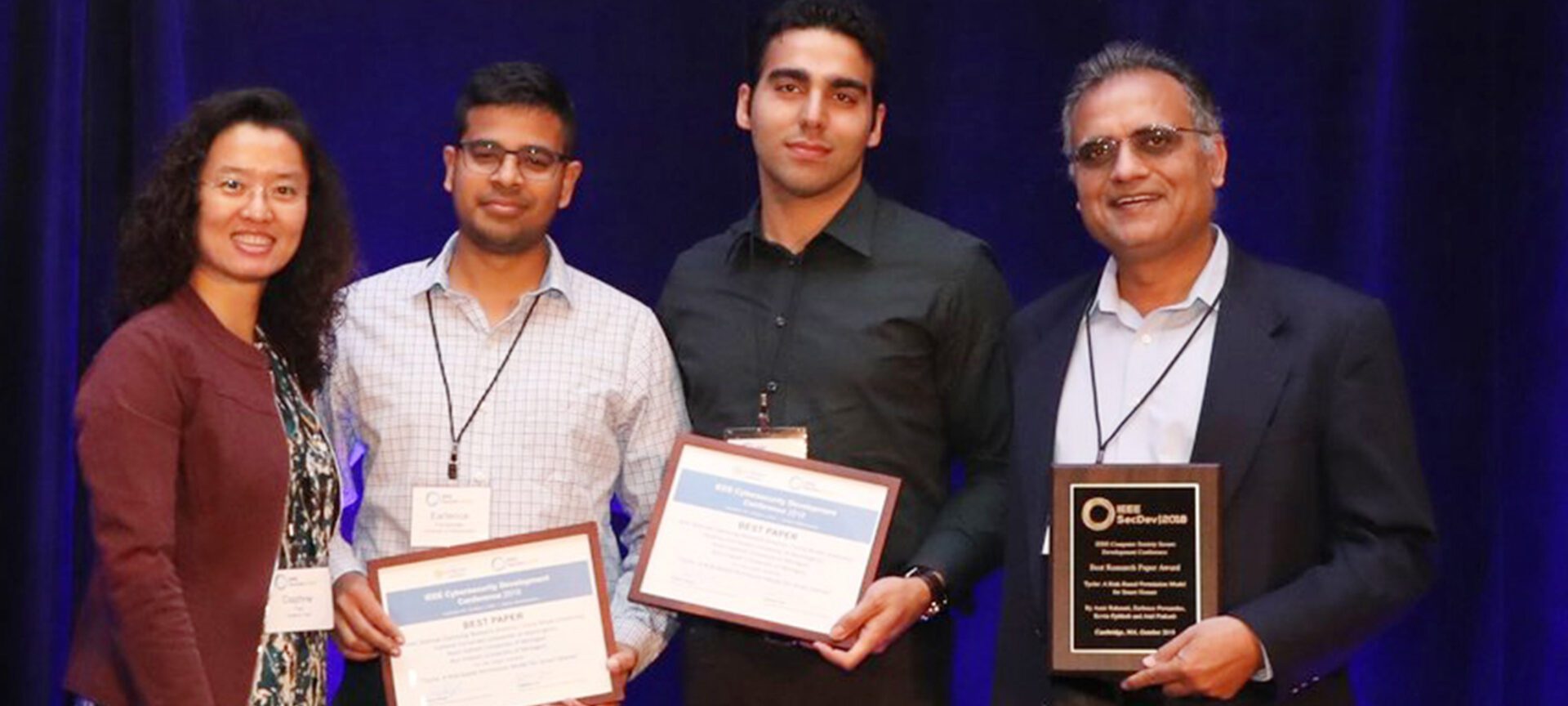
Tyche: A new permission model to defend against smart home hacks
“The work is an important step towards understanding how to make tradeoffs between usability and security.”

Undocumented immigrants’ privacy at risk online, on phones
When it comes to their smartphones, immigrants struggle to apply instinctive caution, according to a study by a team of University of Michigan researchers.

Building a security standard for a post-quantum future
A large quantum computer could retroactively decrypt almost all internet communication ever recorded.

Michigan researchers discover vulnerabilities in next-generation connected vehicle technology
The vulnerability allows an attacker to manipulate a new intelligent traffic control algorithm and cause severe traffic jams.

Can sound be used as a weapon? 4 questions answered
What happened to people inside the U.S. Embassy in Havana?
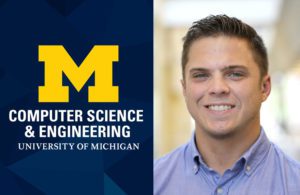
Josh Meyer has built the software that your kids and teachers need
From his days as an online poker playing undergrad to his current role as a technology developer, Josh has discovered a passion – and built a platform – for online learning.

Undergrad game developers sign video game development deal
This is the first time that a team from EECS 494 has signed a funded publishing deal.

Taking on the limits of computing power
By harnessing the power and speed of graphics processing units, a University of Michigan startup can dramatically accelerate gene sequencing, shortening tasks that took multiple days to a single hour.

Student org brings investors to Michigan
UpRound works with national and local firms to accelerate the entrepreneurial ecosystem of the region.
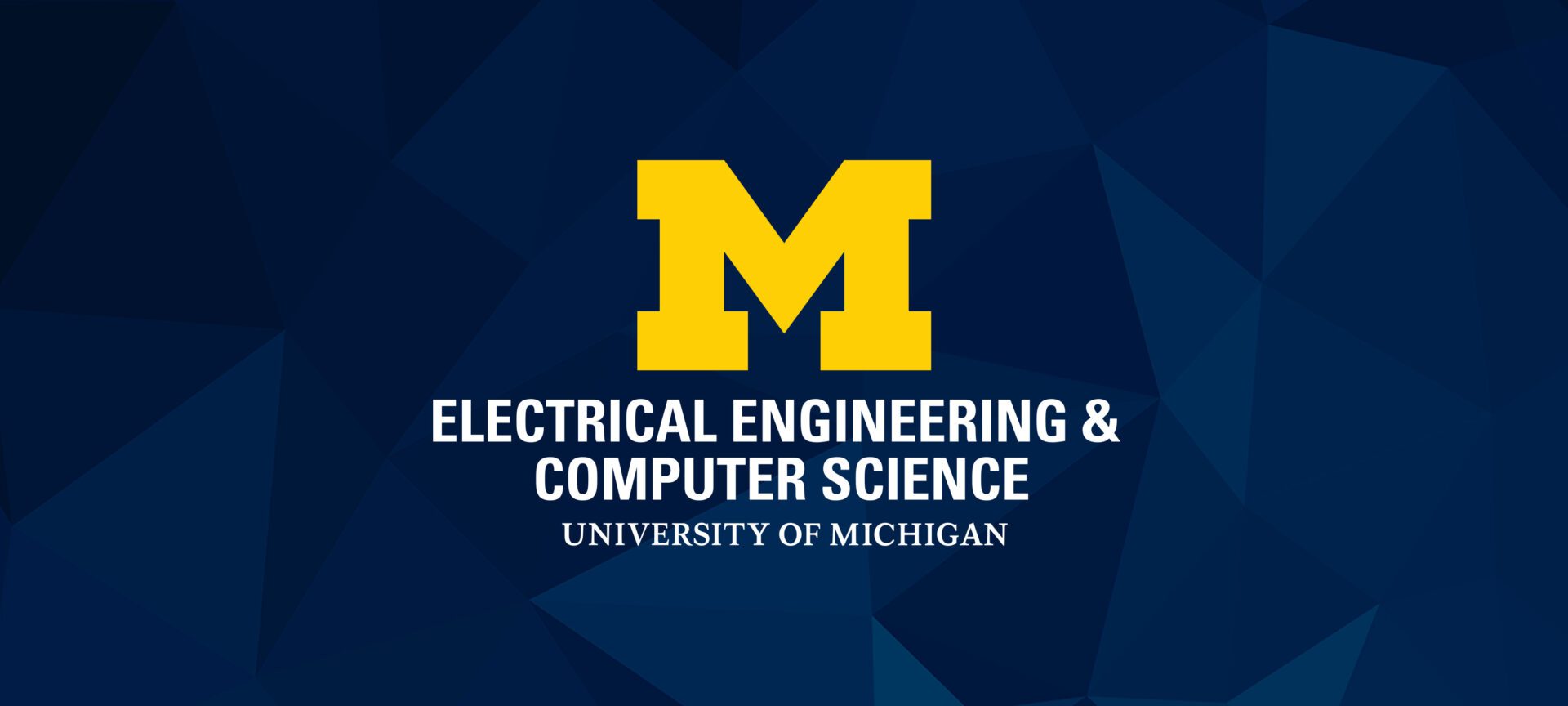
Making education accessible in rural India
Through EduTech, CS student Divyansh Sharma is working to deliver free video courses directly to Indian people in need of basic education.

CSE alum startup SambaNova collects $56m in funding for AI chip research
SambaNova’s approach, stemming from work by Olukotun and co-founder Christopher Ré at Stanford University, seeks to create a new platform from scratch that is optimized specifically for AI operations.

BMW, Toyota invest in U-M startup May Mobility
Other investors include Detroit Venture Partners, Maven Ventures, SV Angel, Tandem Ventures, Trucks Ventures, and YCombinator.

Eric Vander Weele: Building Bloomberg LP
Since graduating from U-M, Eric N. Vander Weele has helped grow Bloomberg’s technology division and increased efficiency and production for employees and clients.
CSE-based startup Clinc receives $6.3M in funding to further develop intelligent banking assistant
Clinc has built Finie, the world’s most advanced voice-controlled A.I. platform for banking.

Clinc launches Finie, an AI personal assistant for mobile banking
Finie, which can be referred to as the “Siri” of personal banking, is an artificial intelligence platform for banks that helps customers talk to their bank accounts in a natural and conversational way.

‘The most interesting tech IPO of the year’ was founded by alums
A Q&A with the Michigan Engineering alumni who founded Twilio, a “unicorn” in the tech industry.
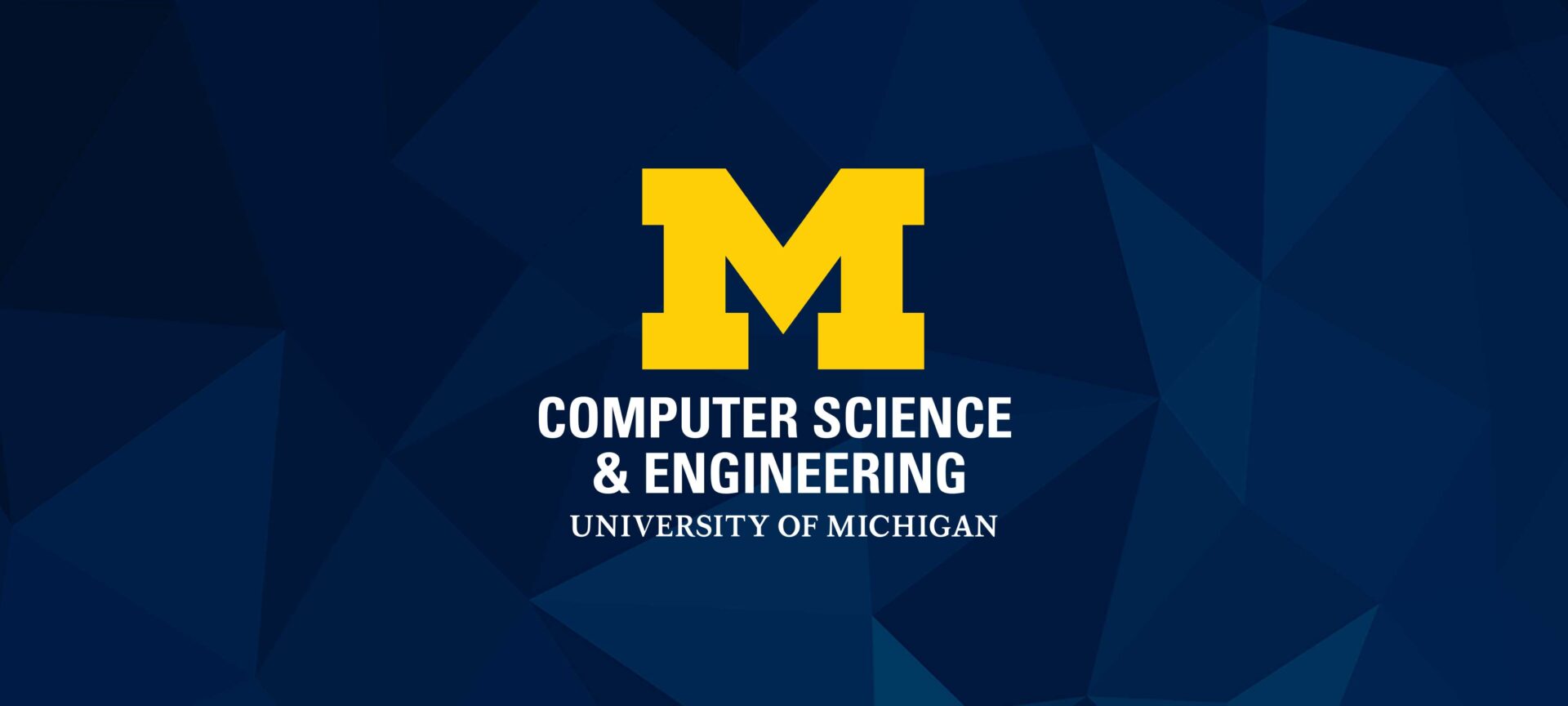
CSE-based startup receives funding to develop systems based on intelligent personal assistant technology
Clinc has built Lucida, its state-of- the-art, open-source intelligent assistant and machine learning platform that allows developers and the open-source community to easily create and deploy personalized voice and vision-based intelligent assistants.

With over 7 million certificates issued, Let’s Encrypt aims to secure the entire web
In order to bring HTTPS to everyone, Prof. Halderman joined forces in 2012 with colleagues at Mozilla and the Electronic Frontier Foundation to found Let’s Encrypt, a non-profit certificate authority with the mission of making the switch to HTTPS vastly easier.

New venture is on the path to build continual learning AIs
Cogitai was formed with the aim of developing AI technology that empowers machines to learn from interaction with the real world.

Startup founded by U-M assoc. professor gets NSF grant
Healthcare security company Virta Laboratories, Inc. has received a $750,000 grant from the National Science Foundation Small Business Innovation Research (SBIR) program.
Health and Fitness Company Founded by CS Alum Gets Acquired by Practo
Entrepreneur Dhruv Gupta bui;d his web and mobile based weight management program that provides customized diet plans and exercises in 2011.

EECS alums are flying high with drone startup Skyspecs
SkySpecs is currently in the process of launching their first product, the Guardian, which will help prevent collisions.
UM Computer Science Alumni Create Cribspot.com
The startup helps college students find suitable places to live, while also helping landlords manage their properties.

EECS Spinoffs recognized as Key Innovators in Business Competition
Congratulations to these winning companies. Go Blue!
Students give a couple of the best among 3,000 Elevator Pitches
Congratulations to Keith Porter and Patrick Theisen!
Engineering Events: Earth Day at 50
Michigan Engineering faculty are hosting teach-ins on a range of Earth Year topics.
The post Engineering Events: Earth Day at 50 appeared first on Michigan Engineering News.

ECE at the center of Celebrate Invention: 2022
Wei Lu talked about his innovations as the 2022 Distinguished University Innovator, followed by a panel discussion about the University’s role in fueling new high tech companies in the area.
Gravity’s impact on bone cells—experiments heading to the International Space Station
Mechanical engineers at the University of Michigan are tackling mysteries of bone density loss in space and on Earth.
The post Gravity’s impact on bone cells—experiments heading to the International Space Station appeared first on Michigan Engineering News.

Vikram Verma talks the value of engineering and leadership to society as the 2022 ECE Alumni Impact Award winner
Verma credits his distinguished 30-year executive career with leading technology companies, including Savi Technology, Lockheed Martin and 8×8 Inc., to a combination of education, leadership, and luck.
Cyber vulnerability in networks used by spacecraft, aircraft and energy generation systems
A new attack discovered by the University of Michigan and NASA exploits a trusted network technology to create unexpected and potentially catastrophic behavior
The post Cyber vulnerability in networks used by spacecraft, aircraft and energy generation systems appeared first on Michigan Engineering News.

Six ECE faculty will help shape the future of semiconductors as part of the JUMP 2.0 program
Elaheh Ahmadi, David Blaauw, Michael Flynn, Hun-Seok Kim, Hessam Mahdavifar, and Zhengya Zhang bring their expertise and creativity to this nationwide undertaking in the area of semiconductors and information & communication technologies.
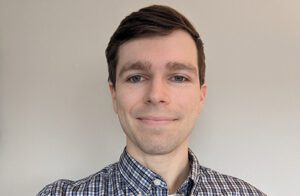
Andrew Wintenberg awarded Predoctoral Fellowship to support research impacting the safety of smart systems
Wintenberg is developing computer algorithms and tools to improve the security of cyber and cyber-physical systems.

ECE Expeditions rides to the Lone Star State for a tour of engineering companies
Students networked with alums, tested demos of new technology, and toured labs at HPE, NASA, Ambiq, Dell, Torc Robotics, and NI.
NASA advances U-M’s Mission Concept Study to photograph entire auroras from space
Two satellites could join NASA’s fleet studying the Sun and its impacts on Earth’s magnetic field.
The post NASA advances U-M’s Mission Concept Study to photograph entire auroras from space appeared first on Michigan Engineering News.
$9.7M for tools to improve forecasts of harmful space weather
Better forecasting could protect astronauts and instruments from solar eruptions that release damaging, high-energy particles.
The post $9.7M for tools to improve forecasts of harmful space weather appeared first on Michigan Engineering News.
Megastorms leave marks on Saturn’s atmosphere for hundreds of years
Massive storms have appeared as “Great White Spots” on Saturn every 20 to 30 years since 1876. The impacts of those older storms have lasted in Saturn’s atmosphere for centuries.
The post Megastorms leave marks on Saturn’s atmosphere for hundreds of years appeared first on Michigan Engineering News.

In a new Technical Sales course, students practice the skill set of selling technology to businesses
Alum Eli Neumann, the Senior Vice President of Worldwide Sales Engineers, co-designed the Center for Entrepreneurship course.

Gregory Robinson details the journey of NASA’s James Webb Space Telescope for Gilleo Lectureship
Under Robinson’s leadership, the James Webb Space Telescope project went from being years behind schedule and billions over-budget to one of NASA’s greatest achievements of the 21st century.
‘Principled action’
A retrospective on the impactful U-M career of departing dean Alec D. Gallimore.
The post ‘Principled action’ appeared first on Michigan Engineering News.
The storied history of a leading space propulsion lab
Alec Gallimore upcycled a lunar rover testing chamber into a world-class electric propulsion center.
The post The storied history of a leading space propulsion lab appeared first on Michigan Engineering News.
Plasma thrusters used on satellites could be much more powerful
It was believed that running more propellant through a Hall thruster would wreck its efficiency, but new experiments suggest they might power a crewed mission to Mars.
The post Plasma thrusters used on satellites could be much more powerful appeared first on Michigan Engineering News.

Alum Mo Faisal on building a successful semiconductor company
Faisal, the 2023 ECE Rising Star Alumni Award recipient, founded Movellus based on his doctoral research conducted under Prof. David Wentzloff.
Tracking undetectable space junk
Colliding pieces of space debris emit electric signals that could help track small debris littering Earth’s orbit, potentially saving satellites and spacecraft.
The post Tracking undetectable space junk appeared first on Michigan Engineering News.
Explaining a supernova’s ‘string of pearls’
It looks like the same mechanism that breaks up airplane contrails might be at play in forming the clumps of hydrogen gas that ring the remnant of supernova 1987A.
The post Explaining a supernova’s ‘string of pearls’ appeared first on Michigan Engineering News.
Bridge in a box: Unlocking origami’s power to produce load-bearing structures
Foldable origami with thick panels opens a world of possibilities.
The post Bridge in a box: Unlocking origami’s power to produce load-bearing structures appeared first on Michigan Engineering News.
 Michigan Engineering | University of Michigan
Michigan Engineering | University of Michigan 




